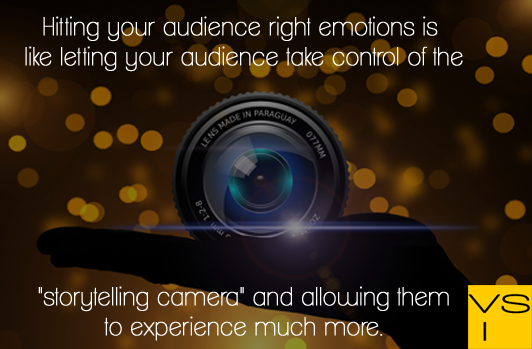September 28, 2016
The Role of Authenticity in Visual Storytelling

When you think about why authenticity plays such a critical role in delivering an impactful message, you can start by looking at the immediate meanings Merriam-Webster dictionary offers:
- Real or genuine: not copied or false
- True and accurate
- Made to be or look just like an original
What’s the first thing that comes to your mind looking at these definitions? If you said fake, phony, artificial – you’re on the right track. These are all adjectives that describe authenticity by using different categories of being untrue.
Authenticity in visual storytelling is one of the most loaded subjects you could imagine visual storytellers are grappling with today. Why? Think back about a recent movie, video clip you watched, or an image that moved you. What was the narrative element that triggered your emotions?
The magic typically happens when the visual story carries a good dose of vulnerability or imperfection that allows the audience to see the human aspects of your narrative and this way develop empathy and trust towards your message. A great example is Unilever’s seminal ‘Dove Real Beauty Sketches’ Viral Campaign of 2013:
This commercial garnered over 130M views and has several success ingredients at play here:
- Customer as the hero: Making the customer the hero of the story so you’re watching real stories by real people from their point of view, not the brand.
- Story duality: The story takes it one step further by revealing that the story people tell themselves about how they look is completely opposite to how other people see them. This is a great lesson for what I call the “double mirror effect.” The better the story you tell yourself, the better it makes you feel and then this effect spills outside to your external relationships and make your message more impactful.
- Make it relatable: By exposing the customer vulnerability/weakness and the element of surprise when contrasting with other people’s views, this helps show customers’ humanity, and trigger empathy.
- Make it believable: Once your story is able to generate empathy, it pushes viewers’ guards down (hey this is a commercial!), they start to identify with the message, see themselves in the story and this way help them trust the narrative core message.
- Bigger purpose: Throughout the video clip you don’t find even one mention or visual plug of the Dove product. Unilever identified a conceptual gap that is much larger than singing the attributes of their Dove soap. Their big WHY? Is really anchored on a simple message of “You’re more beautiful than you think.”
- Empowerment marketing: Unlike inadequacy marketing that uses fear to stage a need for a product, this video is all about human empowerment.

With Cisco projecting that 70% of the world mobile data by 2020 will be video, it has become imperative for marketers to figure out how to create effective video storytelling that will create that sought-after authentic brand experience to move audiences to action.
Ready to unlock the power of visual storytelling and boost your marketing results? Schedule a conversation with the Visual Storytelling Institute about your Visual Storytelling Workshop today!
This post originally appeared at Visual Storytelling Institute.
Source: Visual Storytelling

0 Comments
Leave A Comment